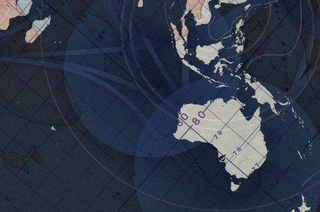On July 20, Japanese Prime Minister Shigeru Ishiba was delivered a stinging rebuke at the polls, losing control of the upper house of the Diet after having already lost the lower house last October. The biggest winners in the election were the Sanseito Party — a far-right political movement that waxes nostalgic for prewar imperial rule. Japan seems to have joined the same trend that saw anti-immigrant parties surge in Germany and Eastern Europe and the rise of MAGA (Make America Great Again) in the United States. Korea, like Britain and Australia, has bucked this trend by electing a centre-left government — but is Seoul at risk of being isolated ideologically from its most important partners?
Ishiba’s Liberal Democratic Party (LDP) and its smaller coalition partner Komeito won 47 seats, three short of the 50 it needed to keep a majority in this election. The campaign was dominated by debates about how to handle Donald Trump’s 25% tariff threat on Japan, high prices and immigration. Ishiba tried to keep public support by meeting with Trump early. But the Japanese negotiators did not have the political latitude to except tariffs on autos, which Trump considered paramount. By election time, Ishiba had nothing to show for his diplomatic efforts.
On inflation, Ishiba was also caught between a rock and a hard place. Finally, on immigration, Ishiba was also caught in a bind. With Japan’s declining population, companies have been relying heavily on foreign workers to fill low wage jobs in retail and construction. With economic anxiety growing due to higher prices and fears of tariffs, some voters turned their anger toward immigrants. Once again, Ishiba was caught between a rock and a hard place, unable to take the populist stance without damaging the economy.
So, was this really a swing to the right? The Sanseito Party will likely jump to 13 seats in the upper house with a campaign narrative that combined “Japan First” rhetoric with antivaccine conspiracy theories, racism toward immigrants and a nostalgia for prewar Japanese militarism that has always coursed through the netto uyoku (online right wingers) — often young men with resentment toward the establishment. But the Sanseito will hold less than 10% of the seats in the upper house, which is the less powerful of the two chambers. As the LDP looks for one of the smaller parties in the Diet to work with on legislation, Sanseito will not make the list, meaning its agenda will find little traction in policy.
The more worrisome problem than a shift of Japan to the right is the ability of the Japanese government to deliver good policy results to help stabilise Asia.
Then there is the question of who might replace Ishiba. One candidate pushing already to replace him is Takaichi Sanae, who was the most right-leaning politician to run against Ishiba last year for leadership of the party. Her election would represent a pronounced shift to the right. However, Ishiba won the party leadership position himself in large part because a majority of the LDP leadership was wary of Takaichi’s pledge to visit the Yasukuni Shrine as prime minister and her negative rhetoric on Japan’s neighbours. Moreover, the seats the LDP lost to Sanseito were mostly held by politicians already on the right of the LDP. As a result, there are now marginally fewer arch conservatives within the LDP after the election. That could rebound to the benefit of younger politicians like Koizumi Shinjiro, the current agriculture minister, or former Economic Security Minister Kobayashi Takayuki. Both are more cosmopolitan and committed to strong alliance relations with the United States and good relations with Korea.
For now, the more worrisome problem than a shift of Japan to the right is the ability of the Japanese government to deliver good policy results to help stabilise Asia. Ishiba was poised to increase defence spending above the 2% target, which would have contributed to integrated deterrence for all U.S. allies, but that is now more challenging at home. Japan’s economy is important for the entire region as a counterweight to dependence on China.
The Japanese public still strongly supports the alliance with the United States. In some polls, over 90% are in favour of the alliance. But Ishiba knows that he might have held on to his majority in the upper house if it were not for Donald Trump’s inflexible stance on tariffs. Despite strong support for strengthening defence cooperation with the United States, Trump’s tariff threat has thrown sand in the gears. Shortly after the election, the White House announced that there was a deal with Japan. It was too late to save Ishiba, it appears — but maybe enough to get the U.S.-Japan alliance back on track. In the end, Japan had to swallow 15% tariffs — a bitter pill for Japanese manufacturers and arguably not good for the U.S. economy either. But it is better to be done with the tariff war.
U.S. Congress and the American public support a stronger alliance with Japan, and the Trump administration’s own strategy to compete with China cannot succeed without Japan’s help. But that does not seem to bother the president. Hopefully, Ishiba’s demise will put an end to the worst friction between the United States and Japan in almost three decades. The rest of Asia needs Washington and Tokyo to focus on producing security.





